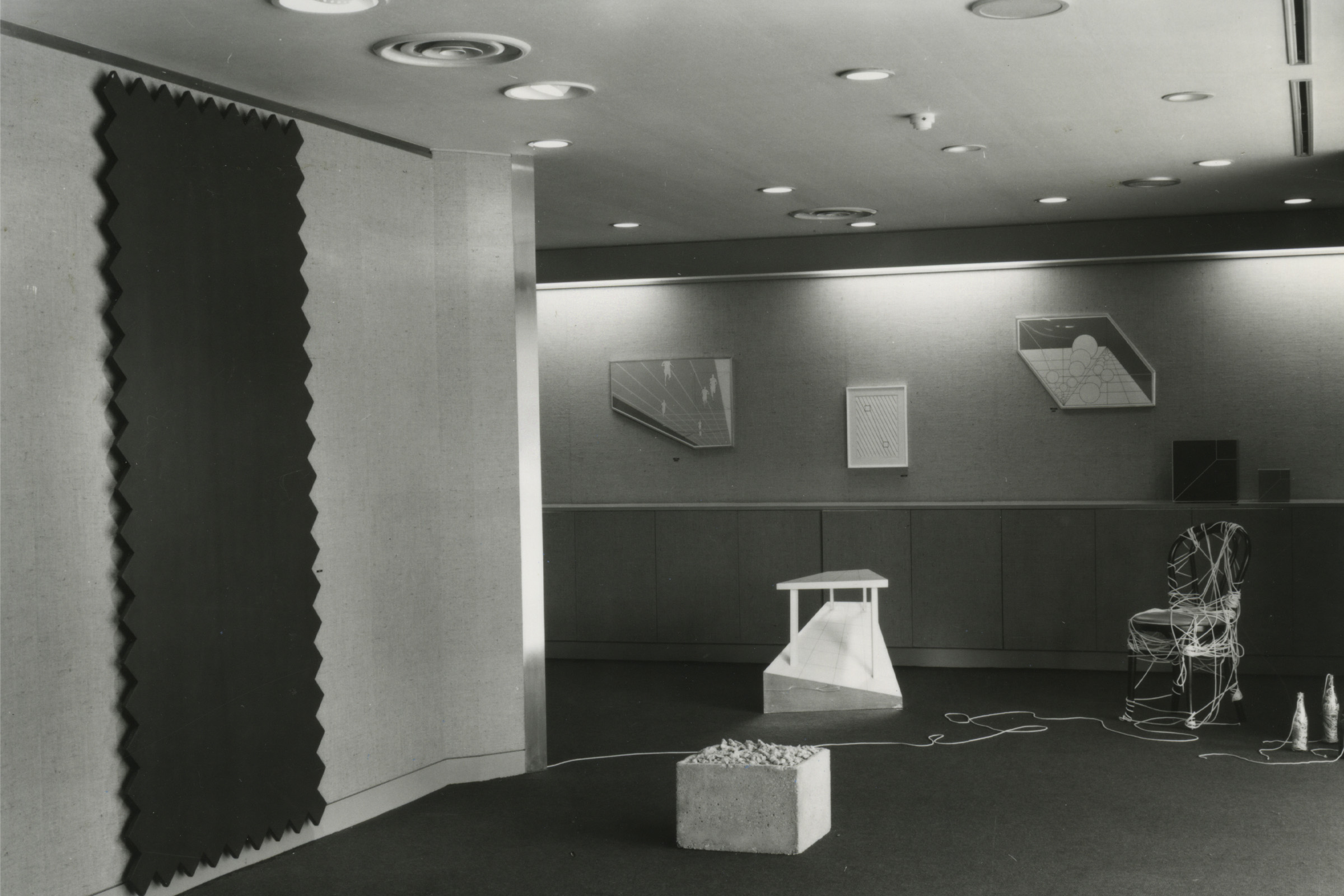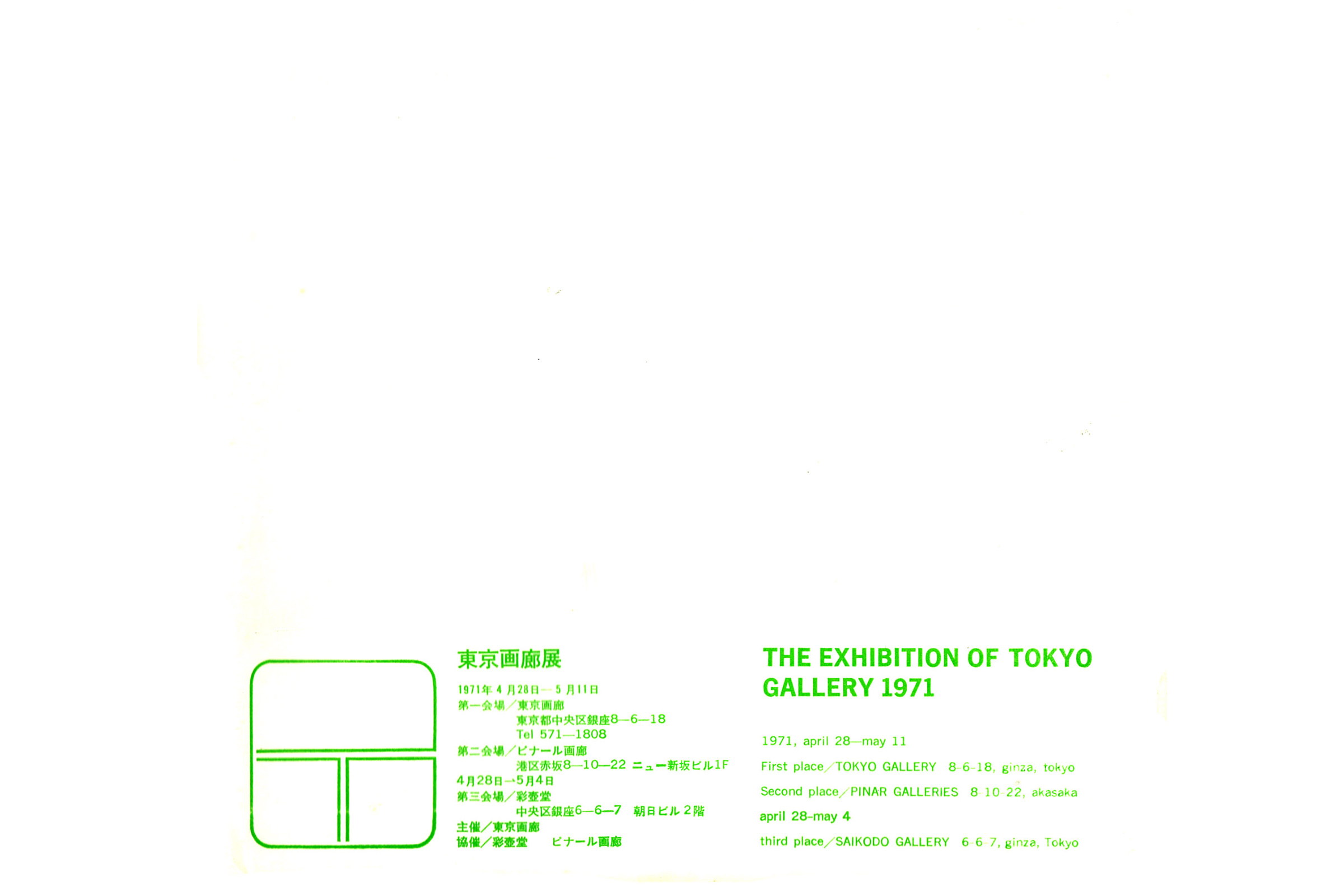Tokyo
Tokyo Gallery 1971
1971/4/28–5/11
Artists: Shin Kuno, Yoshishige Saito, Kazuo Shiraga, Kumi Sugai, Yoshio Sekine, Soshichi Takama, Josaku Maeda, Sadamasa Motonaga, Jiro Yoshihara, Yukihisa Isobe, Shinjiro Okamoto, Kazuo Okazaki,Nobuaki Kojima, Ushio Shinohara, Aiko Miyawaki, Masunobu Yoshimura, Tadanori Yokoo, Kumiko Imanaka, Tatsuo Kawaguchi, Susumu Koshimizu, Nobuo Sekine, Jiro Takamatsu, Shintaro Tanaka, Katsuhiko Narita, Keiji Yabe, Katsuro Yoshida, Yoshinori Suzuki, Shu Takahashi, Ichiro Yamamoto, Etsutomu Kashihara, Hiroshi Okada, Ken Sakaki, Hitoshi Nakazato, Lee Ufan, Hisashi Indo, Tatsuo Kondo, Tadaaki Kuwayama, Masaaki Yamada and Masayuki Nagare

